Long-range patrolling interceptor Tu-128 (part of 1) Creating an airplane
Tu-98
After the development of supersonic speeds fighters in front of the domestic aviation science and technology faced the problem of creating bombers, overtaking the sound. At the first stage, flights of supersonic heavy combat aircraft were considered as short-term regimes, intended mainly to break through the enemy’s air defense lines. It was necessary to solve a number of problems of theoretical and practical nature in the field of aerodynamics, engine-building and aircraft design. The transition to speeds corresponding to the range of numbers M = 1,5 - 2,0 required the use of wings on heavy machines with swept 45 - 60 ° with high-speed symmetrical profiles, which significantly reduced the possibility of obtaining acceptable values of the basic aerodynamic characteristics at cruising (subsonic) flight modes, as well as during takeoff and landing. In addition, in the practical implementation of such a wing, taking into account the large values of elongation required for long-haul aircraft, one would have to face limitations in strength, aeroelasticity and stability. The triangular wing was more suitable for the bomber from the point of view of strength, but its use did not receive unequivocal support from domestic designers because of little knowledge.
As for the first supersonic fighters, for bombers the most rational, under the conditions of mass minimization, as well as ensuring acceptable reliability of engines, recognized the use of powerful single-circuit turbojet engines with afterburners, the short-term inclusion of which increased traction by one and a half to two times, although with a significant increase in consumption fuel. At the same time, domestic engine builders began to develop powerful and cost-effective turbofan engines and turbofan engines, whose specific fuel costs should meet the requirements of a long supersonic cruise flight. However, these promising engines could be used in practice only after a few years.
We needed new approaches to the layout and design of air intake devices for turbojet engines capable of working effectively in a wide range of speeds and flight altitudes. In addition to these problems, related industries were equally challenging to create equipment and weapons suitable for a supersonic bomber.
In the USSR, three classes of supersonic bombers were created in parallel: front-line (to replace the Il-28 in service with the Air Force), long-range (instead of Tu-16) and intercontinental (which were to oust the M-4, ZM and Tu-95). OKB A.N. Tupolev led design and development work in all three classes.
Starting from the end of 1949, the OKB, together with TsAGI, was engaged in theoretical and applied research aimed at choosing the main parameters of promising heavy aircraft designed to achieve high transonic and supersonic flight speeds. As usual, they initially focused on studying the possibility of using one of the already flying vehicles as a base, in particular, the Tu-16. Several options were considered with the wing sweep increased to 45 ° and one and a half to two times as large as the overall load of the power plant (the 97 and 103 projects). But a preliminary assessment showed that as a result of private improvements in the Tu-16 aerodynamics and an increase in engine thrust, at best, transonic and low supersonic speeds can be expected. Therefore, from the beginning of 1950's. began designing completely new machines, aerodynamic layout and design and technical solutions which were initially chosen based on obtaining speeds far exceeding the sound.
The first of these was the front bomber "98" (Tu-98). The official basis for the start of work was a government decree issued in December 1952, according to which the Design Bureau proposed to work out the issue of creating a front-line bomber with a speed of at least 1200 km / h. Specific proposals had to be submitted by the end of March, 1953. Simultaneously with Tupolev, Ilyushin undertook the solution of a similar problem.
In fact, the Tu-98 was designed at the beginning of 1953. At the initial stage, the wing was swept by the 45 ° sweep, since it was about moderate supersonic speeds. But later they relied on a faster car, increasing the wing sweep angle to 55 °, respectively. Two engines of the AL-7 type (AL-7F) were tried to be placed on the sides of the fuselage or in its tail section, and the air intakes were on the sides of the fuselage in front of the wing or above the back of the fuselage. A variant of an aircraft with a delta wing, which did not receive support from TsAGI, was also considered. Finally, for the supersonic firstborn, the Tupolev residents chose a relatively large elongation wing with a sweep angle along the line of quarters of the 55 – 57 ° chords. Such a wing turned out to be quite difficult for linkers, strength engineers and technologists.
The first studies of the Tu-98 turned out to be close to the initial IL-54 projects, which was connected with the general recommendations of TsAGI for this type of aircraft. For the project "98" chose a medium plan with aerodynamically clean thin swept wings and swept tail. In an effort to ensure high aerodynamic quality of the wing, the designers refused to place the main landing gear in the wing and placed them in the fuselage compartments. The high speed of flight forced the superstructure to be removed from the fuselage or to minimize their dimensions. As a result, it was necessary to abandon the tower fuselage gun installations, leaving only the aft installation, the dimensions of the cabin lanterns were reduced to the maximum. Two engines AL-7F with afterburner chambers were placed in the rear fuselage; air was supplied to them through long channels from two side intakes located in the upper part of the fuselage behind the cabin. At the entrance to the air inlets stood a small half-cone, which served as the central body. A boundary layer drain system was also provided, made in the form of a gap between the air intakes and the fuselage. To reduce the wave drag in the transonic zone, in accordance with the requirements of the “space rule”, the aerodynamic layout of the 98 aircraft provided for a slight compression of the fuselage at its interface with the wing.
Preliminary work continued for almost a year and a half. When the overall appearance of the bomber cleared, 12 on April 1954 issued a new decree of the Council of Ministers. In accordance with the OKB A.N. Tupoleva instructed to design and construct a high-speed bomber with two turbojets AL-7F (dry power of each 6500 kg afterburner - 9500 kg) with the following data: the maximum speed when the engine afterburner 1300 mode - 1400 km / h when flying at altitudes 10 000 - 11 000 m; the practical range with a bomb load of 3 t was specified not less than 2300 km; practical ceiling over the target - 13 000 - 13 500 m. The prototype of the aircraft had to be transferred to the factory tests in July 1955, and to the state - in December of the same year. The decree provided for alternative types of power plants in case of failure with the AL-7F: two AM-11 sparklers (AM-15) or two VK-9.
Tupolev appointed D.S. as the Project Manager for the 98 theme. Markov. Until November, 1954 was working to optimize the aerodynamic layout of the machine. At the same time, the working design began, and almost immediately after it, preparation for the production of a prototype. In March, the 1955 of the OKB presented a conceptual design and layout of the aircraft. As noted above, all the basic layout and design solutions were aimed at achieving maximum speed. The result was a very dense layout of the fuselage. In its nose part there was a glazed cockpit of the navigator navigator, who was provided with a good view, behind it - the cockpit of the pilot and the navigator-operator. The entire front of the aircraft, together with the crew cabins, was a sealed compartment. The crew was located on ejection seats. The aircraft installed a panoramic sighting radar "Initiative", coupled with an optical sight OPB-16 and specially designed for new supersonic bombers. The decrease in the relative thickness of the wing to 7% and, as a consequence, a significant decrease in free volumes for fuel made it necessary to place its main stock in the fuselage and only a small part in the caisson of the wing center section. Immediately behind the center section, almost in the center of mass, there was a bomb bay. Behind the bomb compartment were large compartments of the main landing gear. In the released state, they had a rather narrow rut. Each rack carried a cart with four wheels fitted with high-pressure tires. Rack chassis fastened to the fuselage beams. Nasal rack with twin wheels retracts back on the flight.
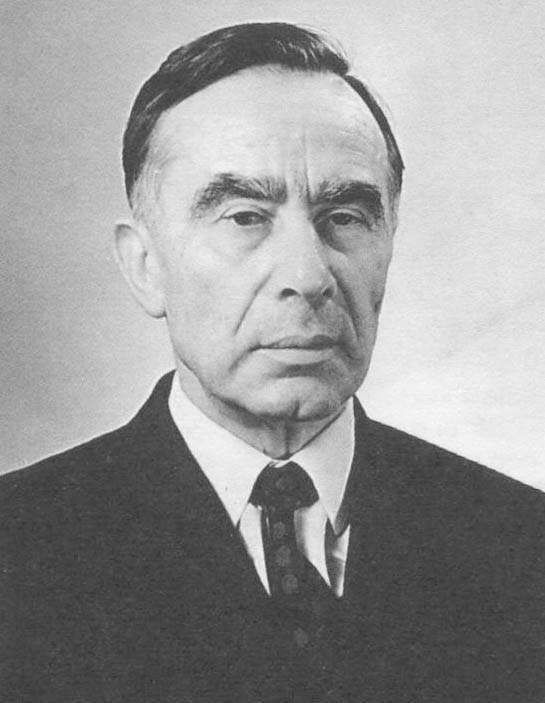
At the rear of the fuselage housed the engines, ending with afterburner chambers. Under the engines was a fuel tank, its fuel was used to balance the aircraft.
The two-spar wing of the caisson design with the 55 ° sweep consisted of a center section and two detachable parts. The wing was installed in relation to the aircraft’s building horizon with a small positive angle, which, in combination with a similar installation of the engines, provided an improvement in the take-off characteristics. Ailerons and flaps were mounted on the wing, there were aerodynamic ridges on each half-plane.
Swept tail was carried out according to the normal scheme. The rudder occupied about a third of the total area of the vertical tail. The horizontal tail was at the bottom in the rear fuselage outside the plane of the wing.
The sharp increase in the load on the aircraft's control authorities required the use of irreversible hydraulic boosters in the control system. For the first time in practice, the design bureau on the 98 aircraft was installed in all three channels (roll, pitch and yaw).
Lengthy profiled panels were widely used in the airframe design. In the wing, aluminum alloy panels pressed together with stringers were used, which, together with the two spars, formed a caisson. The fact is that the panels, due to the small relative thickness of the wing, were unusually highly loaded, which required the use of cladding thickness up to 10 mm. There was a question about the power connection of stringers with such a covering. Modeling and calculations showed that for fastening stringers without significant overloading of the panel, duralumin rivets of small diameters are needed, but the necessary equipment was not available for their manufacture. The problem was decided cardinally: the panel was pressed with a zatselo with stringers. A pipe was made and then unrolled to the desired surface of the wing panel or fuselage. At the same time, this sharply reduced the labor intensity of manufacturing the airframe, since a large amount of riveting work was excluded.
On the plane "98" offered to use a cannon aft installation, which was controlled remotely from the cockpit. The shooter followed the target only on the indicators of sighting devices. Especially for the aircraft "98" under the direction of A.V. Na-Dashkevich, together with OKB-134 (chief designer I.I. Toropov) designed the installation under the two guns AM-23. Aiming was carried out with the help of a radar sight ARS-1 "Argon", the antenna unit of which was placed on the top of the keel. In addition to the aft defensive installation, an AM-23 fixed cannon was mounted in front of the fuselage; the pilot was firing from it. The 98 was supposed to have powerful bombing, rocket and mine-torpedo weapons. It could be placed inside a capacious bomb bay and, if necessary, on external hangers. High-explosive bombs in caliber from 100 to 500 kg, NUR of several types (in special replaceable installations in the bomb bay), torpedoes and mines of various types were envisaged. The machine could be the carrier of the tactical nuclear bomb RDS-4.
The construction of a prototype aircraft at the plant number 156 ended by July 1955, but until February of the following year it stood awaiting AL-7F engines. By the end of February, the car was finally equipped with engines and at the end of the spring 1956 was transported to the LII airfield. 7 June 1956. The aircraft was officially accepted for factory testing; began a long phase of the necessary debugging and checks. Only three months later, on September 7, was the crew consisting of pilot V.F. Kovalev and navigator K.I. Malkhasyan performed on his first flight. Flight tests were quite difficult. There were several reasons. First of all, these are difficulties with the operation and fine-tuning of the control system with irreversible hydraulic boosters and difficulties with the control system of the front landing gear. In addition, the frequent failures of the AL-7F engines were baked. A low-wheel chassis made the car virtually unmanageable on slippery runways. If the testers perceived it as an unpleasant feature of the new aircraft, complicating their lives, then for the combatant pilots, whom it was customary to write in the reports as “pilots of medium qualification”, this was completely unacceptable. In total, until the end of 1957, 30 flights were performed. In one of them they reached the speed of 1238 km / h at the height of 12 000 m - it was a supersonic. The country's leadership and the Air Force demanded that the tests and fine-tuning of the machine be forced, one after another, formidable decrees and orders passed.
Competitors also made themselves known. The first flight of the IL-54 with off-board AL-7 engines took place on 3 on April 1955, the same year the second copy was built and released for testing, with the AL-7Ф. Since 1954, the OKB AS Design Bureau has joined the work on supersonic front-line bombers. Yakovlev, who created the Yak-123 (Yak-26). The first flight of a prototype of this aircraft took place in 1955. Both cars also encountered various problems and were brought with great difficulty.
No formidable decisions could change the essence of the matter: a fundamentally new machine required a serious amount of improvements and flight research and the deployment of mass production, and even less about adopting weapons in a short timeframe. One can judge how difficult the tests of the Tupolev supersonic firstborn were to be judged by an excerpt from the text of the submission for the title of Hero of the Soviet Union for test-pilot V.F. Kovalev, not just getting into acute situations during the tests of the Tu-98. There, in particular, the following was said: "... for the first time in the country, he successfully conducted tests of an experienced supersonic Tu-98 bomber, in the process of which he repeatedly saved the material part."
The tests of the Tu-98 continued until 1959. Despite the great efforts of the employees of the experimental design bureau and the heroism of the testers, it was not possible to bring the plane to the level of transmission to state tests. First, stuck in the mass of improvements and failures inherent in a fundamentally new aircraft. Over time, the main systems were able to get to work reliably, the car began to fly normally, but the Air Force already began to lose interest in it.
In December, the General Staff issued a proposal for the creation and development of the main types of weapons and military equipment for the next 1956 - 10 years. In this document, there was a section on front-line bombers. They wanted to have two types: high-altitude speed with a maximum speed of 15 km / h, 2500 25 ceiling - 000 30 m, supersonic range not less than 000 km and subsonic to 1500 km and front-line for actions at low and medium altitudes with cruising speed 3000 - 1100 km / h and range to 1200 km, armed with an air-to-ground missile with an 2000 - 100 km launch range and speed to 150 km / h, capable of operating from unpaved airfields. Tu-3000 could not meet these requirements, the same applies to the IL-98 and Yak-54.
From the second half of 1957, the prototype Tu-98 was transferred to the experimental category. Now it was intended for flight studies of stability, controllability, vibration loads and structural strength of a heavy supersonic aircraft.
In July, 1957 began work on the aircraft "98" (Tu-24) - a faster version of the Tu-98. It was proposed to ease the car by removing the cannon armament, reducing the crew to two people and refining the airframe design. The take-off weight should have decreased by approximately 30%. At the same time, they switched over to AL-7F-1 engines with increased thrust. The armament included one or two P-15А (P-15М) projectile aircraft. Cruise missiles were planned to be launched either at high altitudes (up to 14 000 m) at a speed of 1400 - 1500 km / h from a distance of 60 - 70 km, or from a height of 100 - 200 m at speeds of 950 - 1000 km / h from a distance of 50 km. In the version of the bomber "98" should have a maximum speed of 1800 - 2000 km / h, range with 2 tons of bombs - 2000 - 2400 km and practical ceiling to 17 000 m. The data of the Tu-24 in general fit into the new requirements of the Air Force to the front bomber, though not fully satisfied with them. It should be noted that in full the initial requirements of the Air Force at that time were unrealistic.
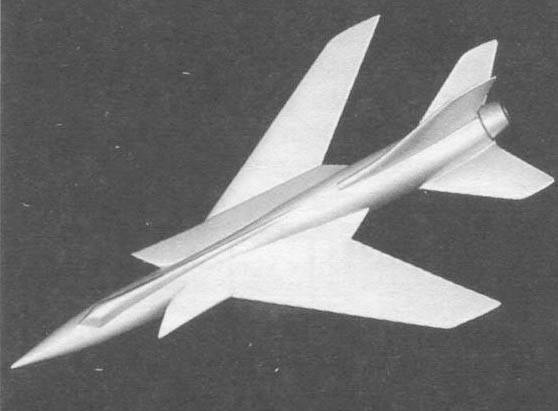
Working on the Tu-24, the Design Bureau tried to eliminate many of the disadvantages of the base machine. The design of the main landing gear has changed; Now, their racks with the carts were retracted to the wing fairings, while the track was increased, and thus one of the serious defects of the “98” was eliminated. Aerodynamics was somewhat refined: they increased the compression of the fuselage, reduced its diameter, repacked the air intakes and air supply channels to the engines, changed the tail section of the fuselage, maximized the lanterns of the navigator and the pilot.
In his letter to the Central Committee of the CPSU from 9 in January 1958, the adoption of the Tu-24 into service was supported by the Minister of Defense of the Republic of Lithuania. Malinovsky and the commander of the Air Force K.A. Vershinin. But the head of the aviation industry P.V. Dementiev found it more profitable to rely on the Yak-129 bomber that had already been tested, and not on the Tupolev aircraft that existed only in the drawings. Work on the type of "98" and its modifications decided to stop.
From bombers to fighters
In the course of factory testing of the 98 aircraft, the commander of the air defense aviation Marshal E.Ya. Savitsky. He turned to Tupolev with a proposal to create a machine structurally close, but with a different purpose. Air defense needed a long-range interceptor fighter armed with heavy air-to-air missiles and equipped with powerful on-board radar.
In 1950-s. NATO air forces have introduced new means of delivering nuclear weapons. weapons, which included strategic jet bomber aircraft capable of carrying thermonuclear bombs, and in the long run, long-range guided missile (cruise missiles) with nuclear warheads. Virtually the entire territory of the USSR was under the "nuclear cap" of a potential enemy. This situation required the adoption in the shortest possible time of energetic measures to equip air defense systems with means capable of neutralizing the threat that had arisen. The first C-25 and C-75 crop systems launched by the Soviet air defense system, with all their advantages, had limited capabilities in terms of range and mobility. They were not able to completely cover all the objects spread over a vast territory of the country. The creation on their basis of a continuous air defense belt capable of protecting the whole country or at least the most dangerous areas in the undeveloped, deserted northern and eastern regions of the USSR was unrealistic for economic reasons. For example, only the deployment of a local system based on C-25 around Moscow required billions of dollars in costs and a huge amount of construction and installation work.
At the same time, the achieved level of development of the domestic aviation and rocket technology made it possible to create a highly mobile long-range interception complex capable of conducting an effective fight against air targets at large distances from their bases. "Cruise missile battery" could attack the enemy anywhere. The fighter-interceptor was now considered as an integral part of a unified system consisting of a carrier aircraft, air-to-air missiles, airborne and ground-based radio-guiding equipment. But the first air defense missile systems (ARC), created by the middle of the 1950-s based on subsonic and supersonic MiG-17, MiG-19, Yak-25 and Su-9 fighters, could provide quite effective interception and destruction of air targets on the distance is not more than a few hundred kilometers from the covered objects. The rapid development of air attacks required the creation of an ARC with an intercept range at distances of 1000 km and more, capable of destroying targets flying at speeds up to supersonic at high and medium altitudes.
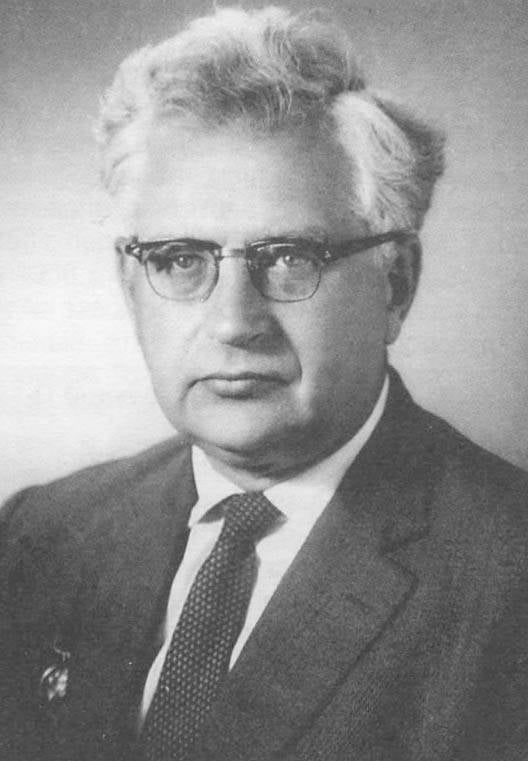
The first attempt to create such a complex was undertaken in the middle of the 1950s. OKB S.A. Lavochkin. His team developed an experienced long-range supersonic La-250 fighter-interceptor (which was part of the ARC La-250K-15), which had a calculated duration of the flight on subsonic over 2 h and maximum speed 1600 km / h. However, the La 250 trials were delayed; bring the car failed. They began to look for an alternative, and found a way out - to modify the Tupolev bomber.
In June, 1957 Tupolev ordered SM. Ege-ru to work on the topic in more detail, taking as a basis the aircraft «98» and projects of its modifications. For almost a year, various options for converting a bomber into a fighter were considered. The closest to the future interceptor on the layout decisions was the project «98А». He was chosen as a basis. The front part of the fuselage was rearranged: in the nose, instead of the navigator's cockpit, it was installed under the radome radome. Four air-to-air missiles with a semi-active radar guidance system were placed on the pylons under the wing consoles. The pilot was now in the front cockpit, the navigator-operator who navigated and worked with the guidance and intercept system was in the rear navigator. AL-7F-1, AL-7F-2 engines and, in perspective, VD-19 engines were considered. Rack chassis cleaned in the fairings on the wing.
4 July 1958 was issued a decree of the Council of Ministers, according to which the Tupolev Design Bureau was instructed to ensure the creation of the Tu-28-80 complex as part of the Tu-28 long-range interceptor fighter with two AL-7F-1 engines, with K-to-air missiles 80 and Air-1 guidance system. The maximum speed of the aircraft during the afterburner is 1700 - 1800 km / h, the duration of the flight on the dial-up (900 - 1000 km / h) - around 3,5 h. The complex was to intercept subsonic and supersonic targets at altitudes up to 21 000 m. It was planned to be presented for factory testing in the first quarter of 1960 and for state tests in the fourth quarter of the same year. Several design offices were involved in the works on the complex: A.M. Lyulka — AL-7F-1 engine and its development AL-7F-2; VA Dobrynina — VD-19 engine, more powerful than the AL-7-2, and intended for the promising version of the Tu-28, calculated at a flight speed of more than 2000 km / h; MR Bisnovata - K-80 missiles with radar and thermal seeker; F.F. Volkov - airborne radar RP-S ("Smerch"). The complexity of the work on the complex was not so much the creation of the carrier itself (the base plane had already flown), but rather the organization of a clear interaction of a large number of enterprises and organizations that participated in the design of all its elements.
Initially, D.S. Markov, but because of its huge load on the Tu-16, Tu-22 and Tu-104 aircraft, in 1959, the main designer of the complex was appointed I.F. Nezval
The interceptor was designed on the basis of a heavy and relatively low-maneuverable bomber, so it was decided that he should not perform a maneuver to reach the same height with targets, as was done in most other intercept aviation complexes. The long range of the K-80 missiles and the possibility of their hitting targets flying with a significant exceed- This allowed the carrier to fly at significantly lower altitudes than the target. This made it possible to transfer the main part of the intercept maneuver from the aircraft to the missiles and calculate the strength of the airframe for the operational overloads on the vertical no more than 2 - 2,5 d, and the missiles - on 15 D. To increase the combat effectiveness, two of the four K-80 missiles had semi-active radar GPS (for attacks from the front hemisphere) and two missiles - thermal (for attacks from behind and when creating a radio disturbance target). The long estimated distance of the aircraft in combination with the possibility of long-term barrage in the zone and in the directions of the expected strikes of the enemy aircraft carried the lines of interception of targets up to 1500 km, preventing planes not only from the guarded objects, but also within the launch of guided missiles. The long-range detection of targets of the Smerch on-board radar and the range of the missiles did not require an accurate launch of the aircraft to the target using ground-based guidance. Because of this, the Air-1 system was very simple. In addition, the complex could operate in a semi-autonomous mode in the radar field of ground-based early warning radars or airborne early warning systems of the Tu-126 type, which made it possible to successfully use the Tu-28-80 ARC in areas lacking automated guidance systems (Siberia, Far East) ; the creation of them would require large material costs. According to preliminary calculations, the new complex had high efficiency and could ensure the likelihood of hitting a target when firing two missiles at the level of 76 - 77%.
When designing the Tu-28, the OKB performed a great deal of work on the aerodynamic and constructive improvement of the original 98 aircraft. In order to optimize the operation of air intakes and engines in all flight modes, adjustable two-speed air intakes with moving central bodies — half-cones were used. In order to improve the take-off and landing characteristics, they designed effective retractable slotted flaps, introduced spoilers, changed the chassis, in which, unlike the 98, we used four-wheel main racks with placement on the wing and cleaning them in the wing nacelles (they fit well as bodies of extrusion into the practical application “area rules”), provided for a braking landing parachute, etc. These activities made it possible to obtain a combination of high flight characteristics of the Tu-28 at both supersonic and subsonic cruising flight speeds with good take-off and landing characteristics. The aircraft was equipped with a pilotage-navigation and radio communication complex, similar in functionality to those used on the Tu-16 long-range bomber, which made it possible to ensure the possibility of flying and reliable navigation in the regions of the North and the Far East. The composition of the crew for the new interceptor was recognized as the best of two people: a pilot and a navigator operator. The presence of the latter made it possible to transfer to it a significant part of interception operations and all navigation, unloading the pilot, which became extremely important when performing long flights, especially in an unoriented area. In the course of the design, despite a significant change and expansion of equipment and weapons compared to the Tu-98, we managed to meet the take-off weight of the 40 t. Use of the AL-7F-2 engines (maximum static thrust at the 10 100 afterburner) and significant improvement Aerodynamics made it possible to increase the maximum airspeed and a short distance by a factor of 1.5.
In July, an experienced Tu-1958 was going to write off 98. However, the start of work on the Tu-28-80 complex extended his life as a flying laboratory for developing the new interceptor’s weapon system.
The Voronezh branch of the OKB (at the plant number 98) under the leadership of A.I. was engaged in the alteration into a flying laboratory called “98LL” (Tu-98LL, official documents also appear as Tu-64А). Putilova. In 1959, the flying lab was ready. From the plane they dismantled the nose navigator cockpit, the Initiative and Argon radars, all cannon and bomber armaments. The layout of the Smerch radar (later and the real station) was placed in the new bow, two pylons under the K-80 missiles appeared under the wing. In 1959, the flights of the missile weapons program began; conducted their pilot M.V. Kozlov.
The last flight of the aircraft made 21 in November 1960. On that day, after the take-off, the main landing gear was not removed, and after that the landing gear left the landing gear because of the breakdown of the cantilever bolt of the earrings of the middle part of the folding strut. The plane was damaged. Although it could be restored relatively quickly, they did not do it. Tests on testing elements of the Tu-28-80 complex were continued at the flying laboratory established on the basis of the Tu-104, moreover, the construction of the first prototype of the 128 interceptor was completed.
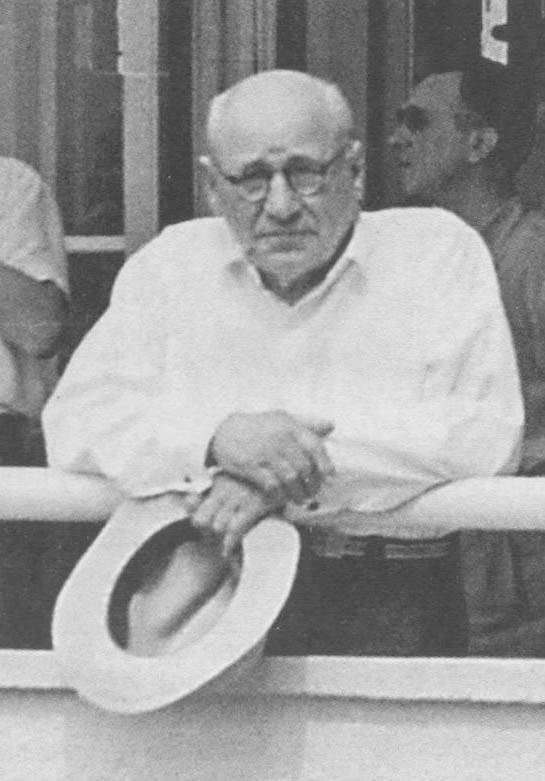
By June, 1959 prepared its draft design. After approval by the customer in August of the same year, the production of working drawings for the construction of a prototype at the plant number 156 in Moscow began. In January, 1960 held a mockup commission, basically endorsing the design decisions made. The construction of the prototype continued until the summer of 1960. In January, 1961 was transferred to the factory for testing. March 18 crew consisting of pilot M.V. Kozlov and navigator K.I. Malkhassya-na, lifted the car into the air. 24 April, she first exceeded the speed of sound.
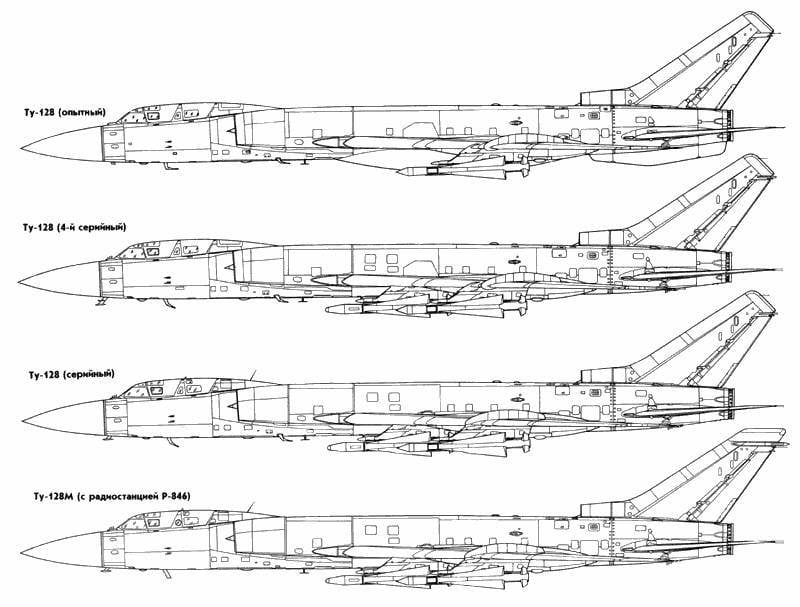
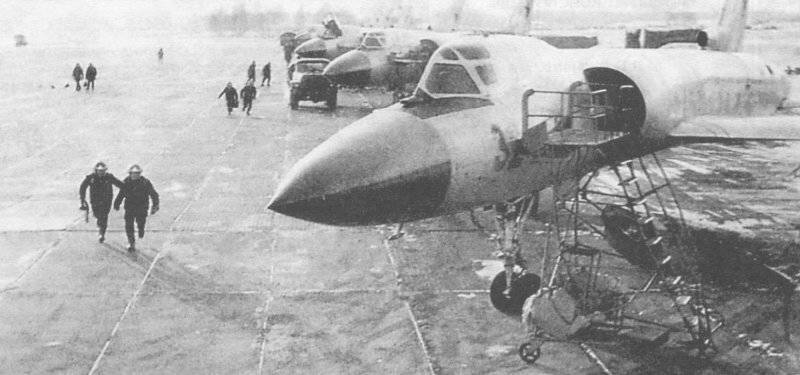
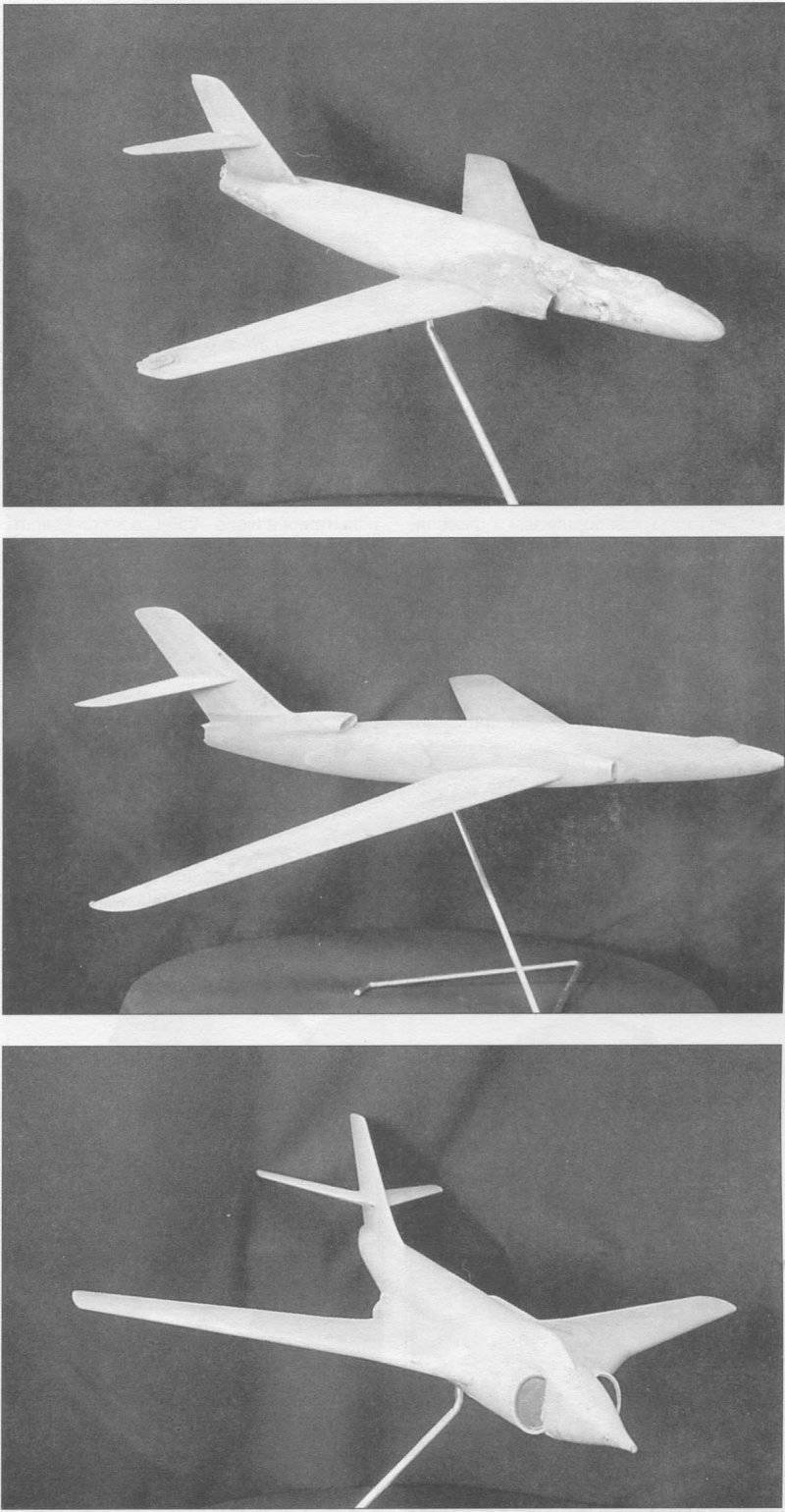

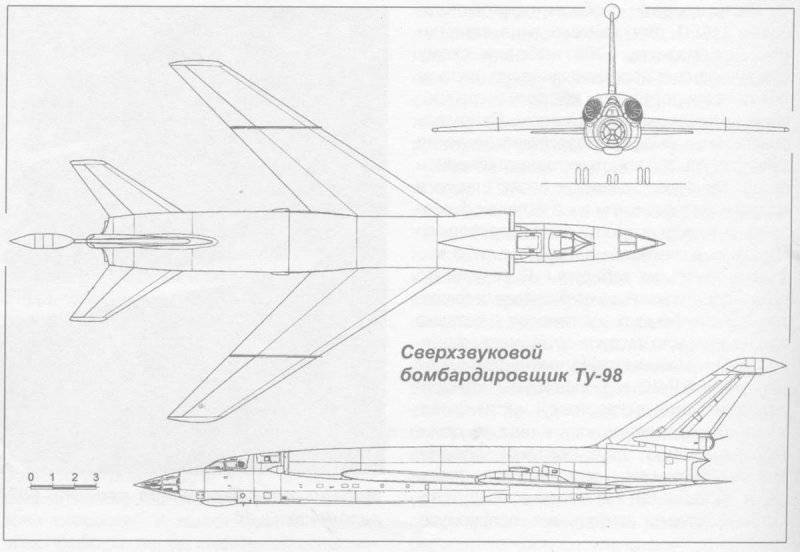
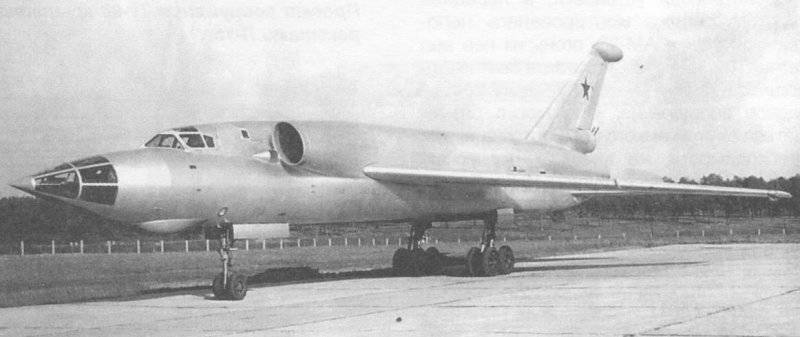
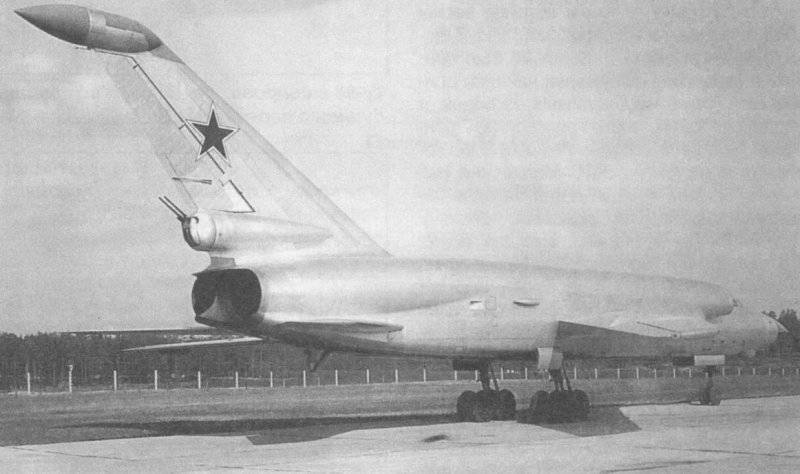
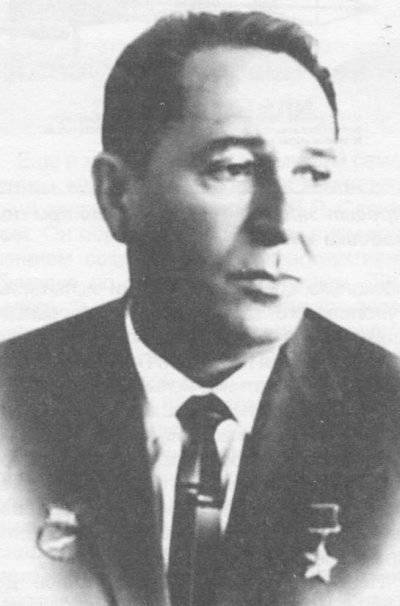
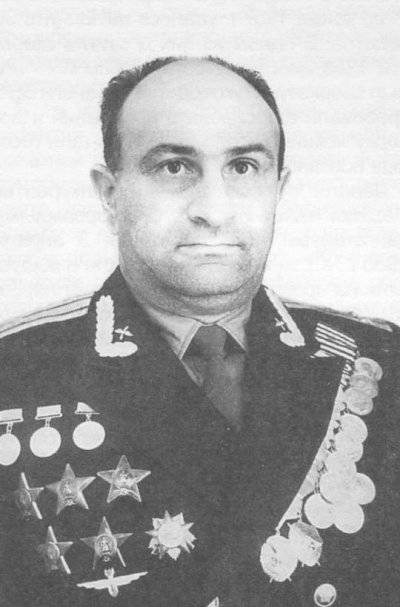

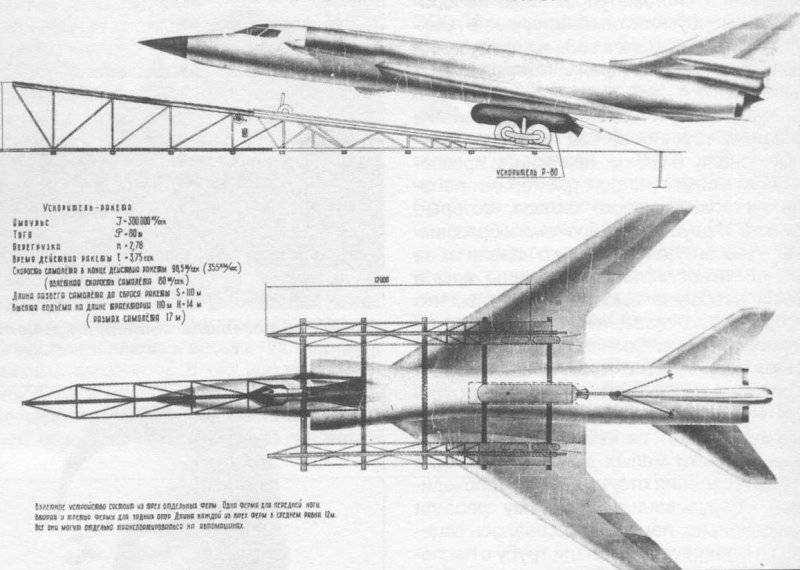
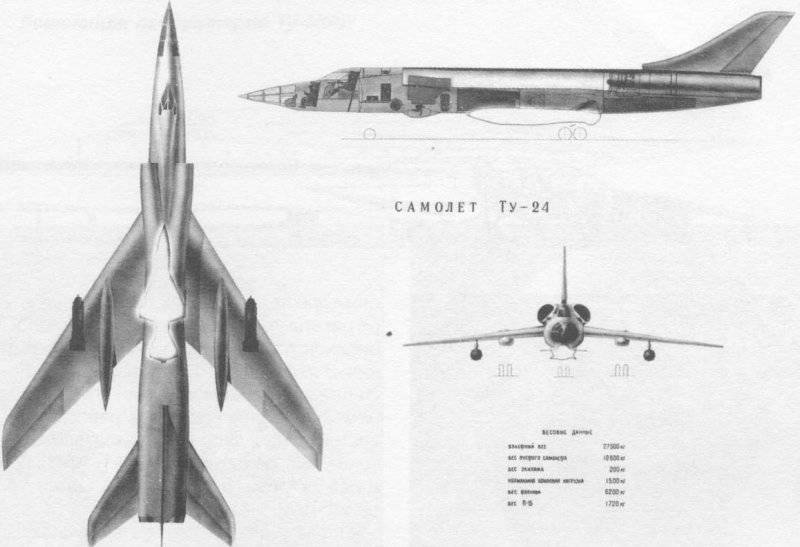


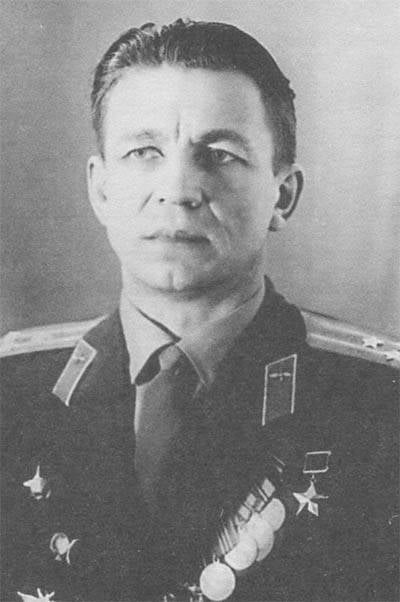
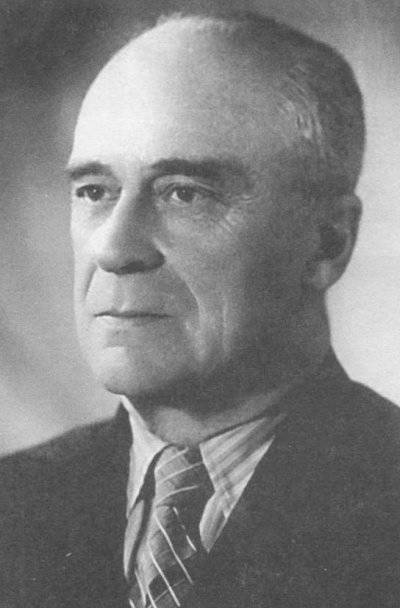
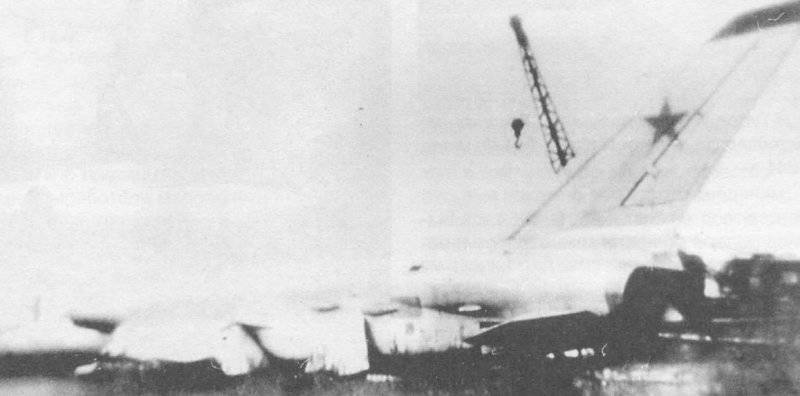


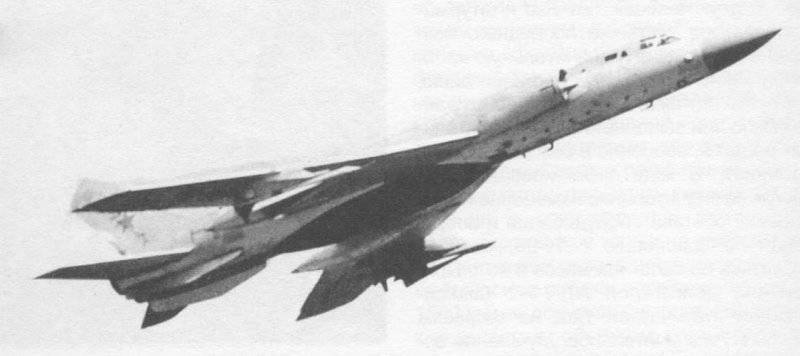
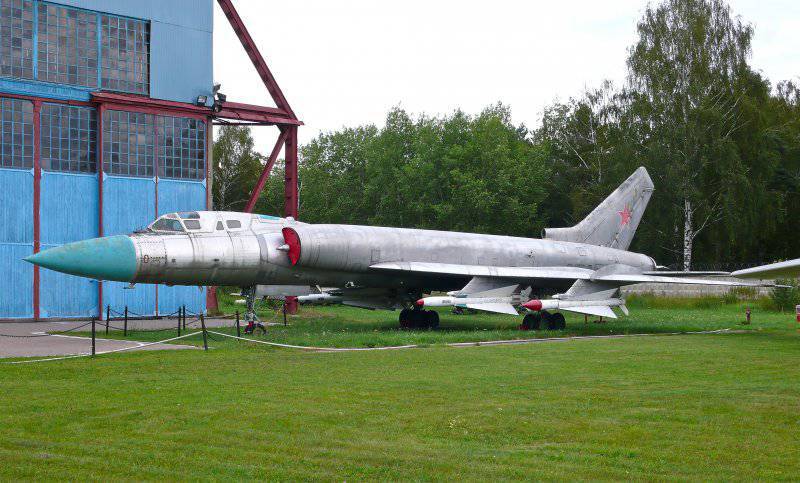
Information